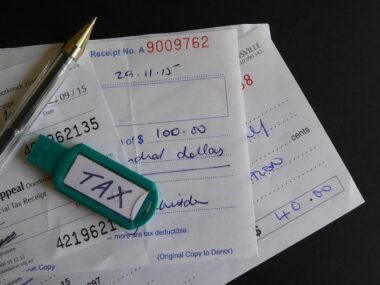How to Handle Amended Tax Forms and Corrections
When you discover an error on your tax form, it is vital to correct the mistake promptly to avoid penalties or complications. The amendment is necessary to ensure accuracy in reporting income, tax deductions, or other pertinent information. Start by identifying the specific error in the original tax return submitted to the Internal Revenue Service (IRS). Determine if the mistake is minor or if it significantly affects your total tax liability. Gather the necessary documents that support the correction needed. In most cases, you will need the original tax return and documentation that substantiates the changes. The IRS requires you to file Form 1040-X, which is the official amended tax return form. This form can be found on the IRS website or through your tax software. When filling out the form, clearly explain the reason for the amendment. Make sure to include any calculations or changes that may impact your tax return. Once completed, you can submit it by mail. The IRS typically takes about 8 to 12 weeks to process an amended return.
It is imperative to understand the time frames related to filing amended tax forms. Generally, you can amend your tax return within three years of the original filing date to claim a refund. Similarly, if you owe additional taxes due to the amendment, that refund option remains valid only up to three years. Otherwise, any overpayments cannot be reclaimed after that period. Understanding IRS timelines is crucial to ensure you don’t miss your chance for a refund or face additional penalties because of an unmet deadline. Always double-check the dates when you initially submitted your tax return compared to when you file your amended form. If it has been more than three years since the original filing, you may also retain pertinent records for up to six years, but refund concerns become less central the longer you wait. To keep information organized, maintain a copy of your 1040-X form and any included documentation. All of this will not only help you track your amended return’s progress but also serve as a critical reference for any future IRS inquiries.
Common Mistakes to Avoid
When amending your tax returns, it is essential to avoid typical mistakes that can further complicate the process. One common error is failing to sign the amended form. The IRS does not accept unsigned forms, which can result in delays or rejections of your submission. Moreover, be precise when reporting the changes on Form 1040-X. Ensure that you accurately enter the revised amounts in the correct columns. Any discrepancies between the original tax return and the amended form may raise red flags for the IRS. It’s also crucial to avoid rushing through the process; take the time to double-check all entries for accuracy. Miscalculations can lead to incorrect tax obligations or delayed refunds. Additionally, if you are recording any state tax amendments, remember that these often require filing separate forms that align with your federal submissions. Consult your state’s tax office for specific guidelines. Lastly, when mailing your amended return, consider using a traceable shipping method to ensure the form arrives as expected and to confirm its receipt by the IRS.
After submitting your amended tax return, it is essential to know how to track its status to alleviate any worries. You can check the status of your amendment through the IRS website, specifically using the ‘Where’s My Amended Return?’ tool. This tool allows taxpayers to see when the IRS received the amended form and the current processing status. To utilize this feature, you will need to provide basic information like your last name, social security number, and the date of birth. Typically, this tool provides updates approximately three weeks after the IRS receives your amendment. Be aware that processing an amended return is inherently slower than a standard tax filing, often taking up to 12 weeks. Remain patient during this period. Keep in mind that while awaiting your refund, interest may accrue on any overpaid tax amounts. The IRS will send a separate notice regarding any funds owed or refunds processed. Tracking your amended tax return not only keeps you informed but also helps you address any potential issues immediately should they arise.
Feeling Overwhelmed? Seek Professional Help
If the complexity of amending your tax return feels overwhelming, don’t hesitate to seek help from a tax professional. Certified Public Accountants (CPAs) or tax attorneys can provide specialized knowledge and accurate guidance that ensures your amended return is filed appropriately. They can identify specific deductions or changes that may benefit you and help correct potential mistakes you may overlook. In a rapidly changing tax landscape, having an experienced advocate can save you time and stress. They can also represent you before the IRS, which is particularly beneficial if there are disputes regarding your amendment or tax liabilities. Furthermore, a tax professional can help you establish a plan for future tax returns to minimize the likelihood of needing to amend again. Whether you want someone to prepare your forms or review them for accuracy, understanding what services are available will improve your peace of mind. Investing in professional help may incur costs but can offer long-term benefits in maximizing your returns and avoiding unwanted penalties.
Another significant aspect to consider is how amended tax forms may impact your financial life. Amending your tax return could lead to adjustments in eligibility for specific tax credits and benefits. For instance, if the amendment results in increased income, you may jeopardize eligibility for tax credits that are designed for lower-income taxpayers. Always assess how changing your income could affect your credit eligibility, which can impact future financial decisions. Moreover, if you recently applied for financial aid or loans, notify relevant parties about changes that may arise from your amended tax return. Understanding the broader implications of your amendments can help guide your immediate and long-term financial planning. Doing this proactively means you can effectively prepare for any shifts you may encounter. Even a minor discrepancy in your modified return can cascade into unforeseen consequences. Keep a thumb on the pulse of your financial landscape to align your amended form with your overall financial strategy.
Final Tips for Amended Tax Forms
Once you are well-versed in all the necessary steps and considerations, executing your amended tax forms should become more manageable. Start by being organized; gather the required documentation and records before initiating the amendment process. It may also be helpful to create a checklist based on the necessary tasks and deadlines associated with filing Form 1040-X. Additionally, always remember to regularly review your previous tax filings, especially if you anticipate needing to amend again. Understanding patterns in your finances can help you mitigate future mistakes. Utilize reputable tax preparation software to ease the filing process and ensure higher accuracy. Professional tax assistance can also guarantee that any complexities are correctly handled. On a final note, maintain open communication with the IRS; if further clarification is needed during their review period, responding promptly can facilitate smoother processing. Being proactive about your taxes instills confidence and ensures compliance with IRS regulations, potentially enhancing your refund experience as complex tax situations are managed with minimal stress.
In conclusion, handling amendments to tax forms requires diligence and an understanding of IRS regulations. Keep thorough records and be informed of your rights and obligations as a taxpayer. Adequately filing amendments may ultimately save you money and foster positive relationships with tax authorities.





